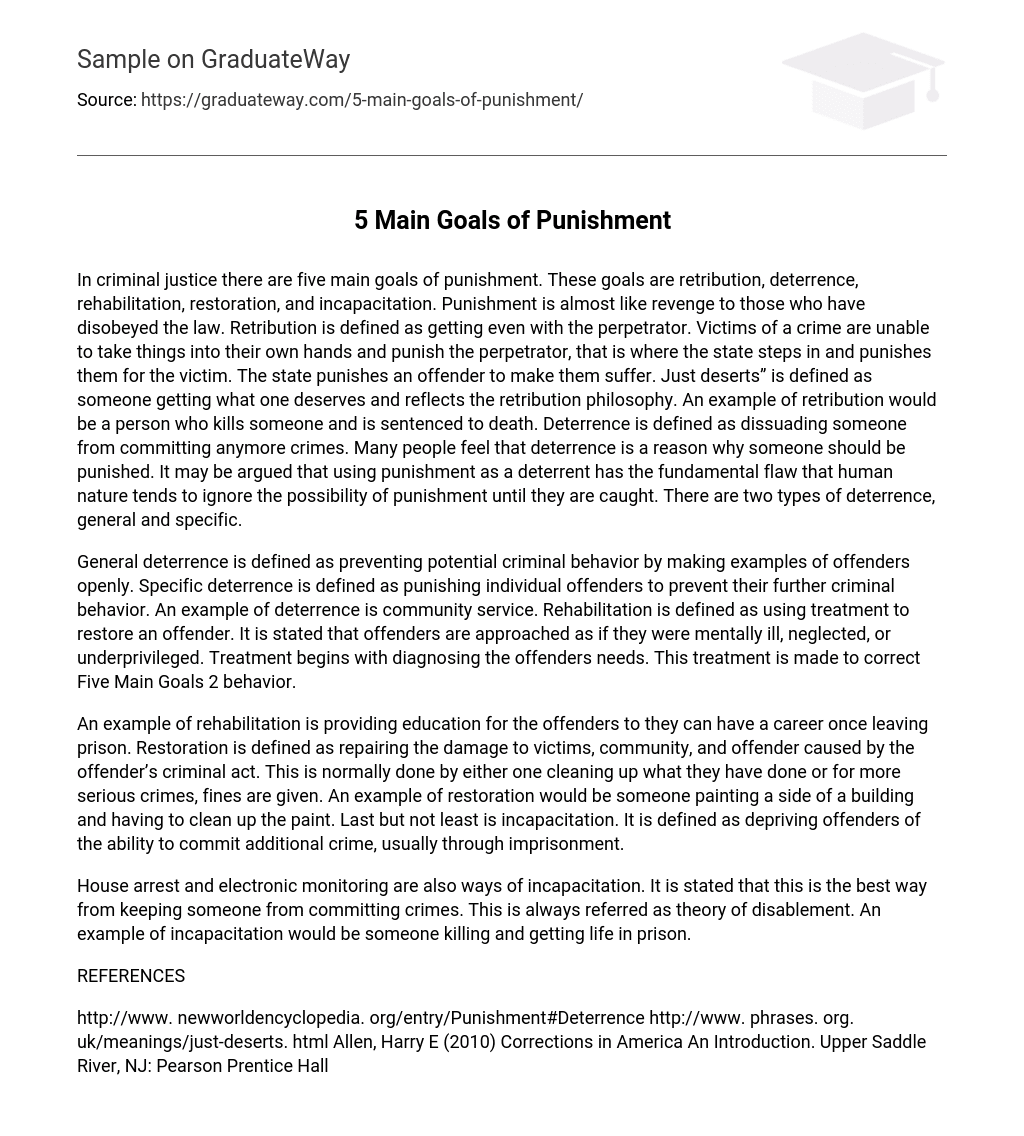The main objectives of punishment in the criminal justice system include retribution, deterrence, rehabilitation, restoration, and incapacitation. Punishment serves as a means to seek revenge against lawbreakers. Retribution seeks vengeance on behalf of victims who are unable to personally administer punishment. Instead, it is the state that intervenes and imposes consequences on offenders. This aligns with the notion of “just deserts,” ensuring appropriate retribution for their actions. For example, if someone takes another person’s life, they may receive a death sentence. Deterrence aims to discourage individuals from committing further crimes. Some argue that punishment should act as a deterrent factor; however, this assumes people only consider potential consequences after being apprehended—a logical flaw exists here. Deterrence can be either general or specific in nature.
General deterrence aims to prevent potential criminal behavior by openly highlighting the consequences faced by offenders. In contrast, specific deterrence aims to discourage individual offenders from engaging in further criminal behavior by imposing punishment on them. Community service serves as an example of a deterrent measure. Rehabilitation, on the other hand, focuses on using treatment to restore offenders, approaching them as if they had mental illness, neglect, or underprivilege. Diagnosing the needs of offenders is the initial step in this treatment, which aims to address and improve their behavior according to Five Main Goals.
Rehabilitation is providing education to offenders for future career opportunities after their release from prison. Restoration focuses on repairing the harm caused by the offender’s crime to the victims, community, and the offender themselves. This can include actions such as cleaning up damage or imposing fines for more serious offenses. An example of restoration would be painting over graffiti and removing it from a building. Lastly, incapacitation involves preventing offenders from committing additional crimes, usually through incarceration.
The theory of disablement demonstrates that house arrest and electronic monitoring are the most effective methods to prevent individuals from committing crimes, as they incapacitate them. This is exemplified through sentences like life imprisonment for those convicted of murder.
REFERENCES
To learn more about punishment and deterrence, you can visit http://www.newworldencyclopedia.org/entry/Punishment#Deterrence and http://www.phrases.org.uk/meanings/just-deserts.html. Additionally, for further study, you can refer to the book “Corrections in America An Introduction” by Harry E. Allen. (Source: Upper Saddle River, NJ: Pearson Prentice Hall, 2010).





